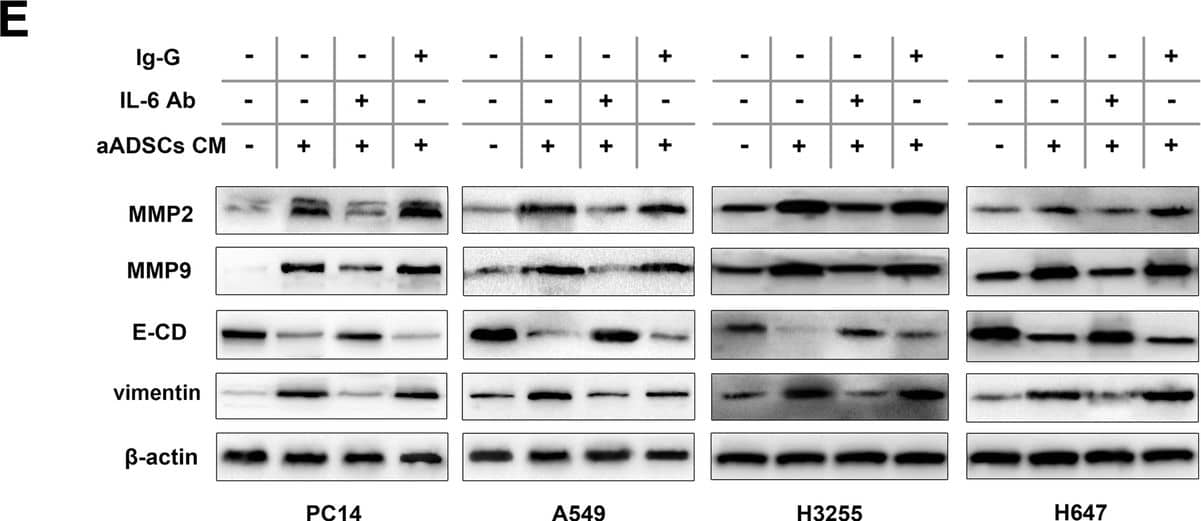Human LAG-3 mFluor™ Violet 610-Conjugated Antibody Summary
Leu23-Leu450
Accession # P18627
Customers also Viewed
Applications
Please Note: Optimal dilutions should be determined by each laboratory for each application. General Protocols are available in the Technical Information section on our website.
Scientific Data
![LAG-3 Antibody (874501) [mFluor Violet 610 SE] LAG-3 Antibody (874501) [mFluor Violet 610 SE]](https://resources.rndsystems.com/images/datasheets/fab23193mfv610_mouse-lag-3-mab-874501-mfluor-violet-610-se-flow-cytometry-912024143342..jpg) View Larger
View Larger
Detection of LAG‑3 in PBMCs treated with 5 ug/mL PHA for 5 days cells by Flow Cytometry. PBMCs treated with 5 ug/mL PHA for 5 days were stained with Mouse Anti-Human CD3 epsilon APC‑conjugated Monoclonal Antibody (Catalog # FAB100A) and either (A) Mouse Anti-Human LAG‑3 mFluor™ Violet 610-Conjugated Monoclonal Antibody (Catalog # FAB23193MFV610) or (B) unstained cells. View our protocol for Staining Membrane-associated Proteins.
Preparation and Storage
- 12 months from date of receipt, 2 to 8 °C as supplied.
Background: LAG-3
LAG-3 (Lymphocyte activation gene-3), also known as CD223, is a member of the immunoglobulin superfamily (IgSF). The mature LAG-3 protein is a 496 amino acid (aa) membrane protein with a 421 aa extracellular region which contains four IgSF domains, a 21 aa transmembrane region and a 54 aa cytoplasmic region. LAG-3 and CD4 molecules share < 20% aa sequence homology but have a similar structure (1, 2). Both molecules bind to MHC class II. LAG-3 binds to MHC class II with higher affinity compared to CD4. Both LAG-3 and CD4 genes are located on the distal part of the short arm of chromosome 12.
LAG-3 is an activation-induced molecule, expressed on activated T cells and NK cells, but not on resting T cells. Studies using LAG-3 -/- mice have shown significant delay of T cell apoptosis following antigen stimulation and increased size of memory T cells pool following infection (3, 4). It also has been reported that anti-LAG-3 antibodies up-regulate T cell activation by blocking interaction of LAG-3 and MHC class II. The study has demonstrated that LAG-3 is selectively expressed on activated CD4+CD25+ TReg cells and plays a role in their suppressive activity (5). This evidence indicated, unlike the interaction of CD4 with MHC class II that plays a positive role in T cell activation, LAG-3 binds to MHC class II and negatively regulates T cell activation through LAG-3 signaling. On the other hand, studies have shown that binding of LAG-3 to MHC class II molecules on antigen presenting cells induce maturation of dendritic cells and cytokine secretion by monocytes through MHC class II signal transduction (6). Taken together, LAG-3 may have two major functions, it negatively regulates T cells activation through LAG-3 signaling and stimulates antigen presenting cells which express MHC class II.
- Triebel, F. et al. (1990) J. Exp. Med. 171:1393.
- Baixeras, E. et al. (1992) J. Exp. Med 176:327.
- Workman, C.J. and D.A. Vignali (2003) Eur. J. Immunol. 33:970.
- Workman, C.J. et al. (2004) J. Immunol. 172:5450.
- Huang, C.T. et al. (2004) Immunity 21:503.
- Andreae, S. et al. (2003) Blood 102:2130.
Product Datasheets
Product Specific Notices
mFluorTM is a trademark of AAT Bioquest, Inc.FAQs
No product specific FAQs exist for this product, however you may
View all Antibody FAQsStaining Reagents
Reviews for Human LAG-3 mFluor™ Violet 610-Conjugated Antibody
There are currently no reviews for this product. Be the first to review Human LAG-3 mFluor™ Violet 610-Conjugated Antibody and earn rewards!
Have you used Human LAG-3 mFluor™ Violet 610-Conjugated Antibody?
Submit a review and receive an Amazon gift card.
$25/€18/£15/$25CAN/¥75 Yuan/¥2500 Yen for a review with an image
$10/€7/£6/$10 CAD/¥70 Yuan/¥1110 Yen for a review without an image














